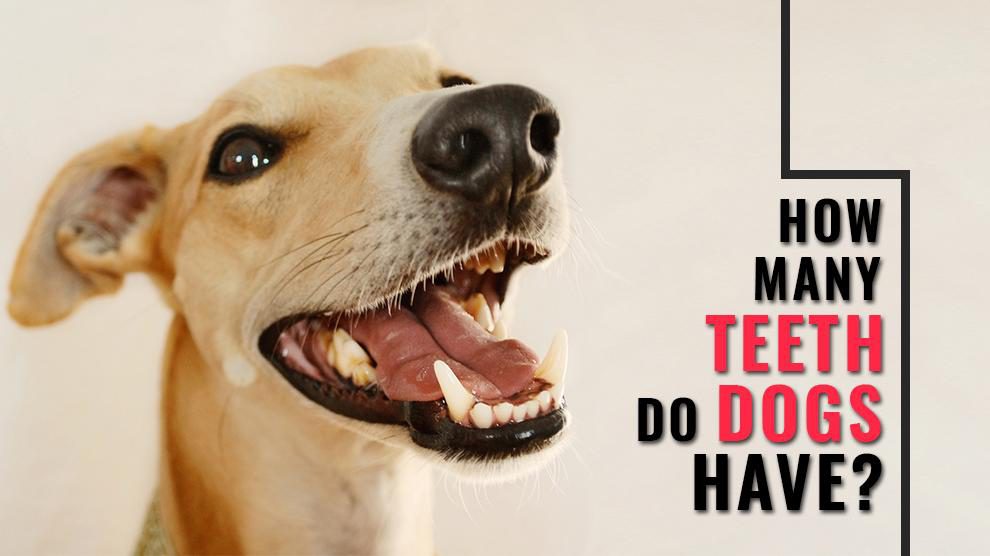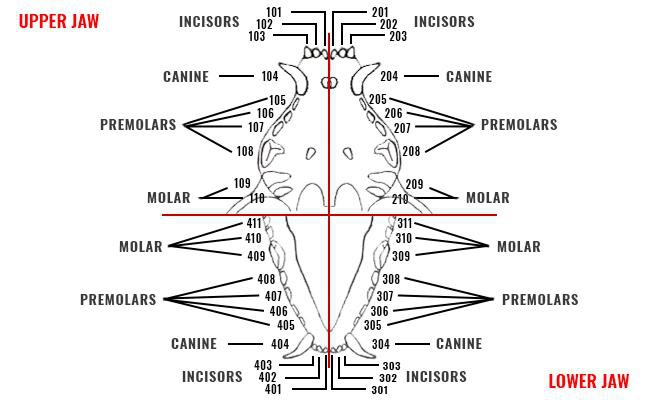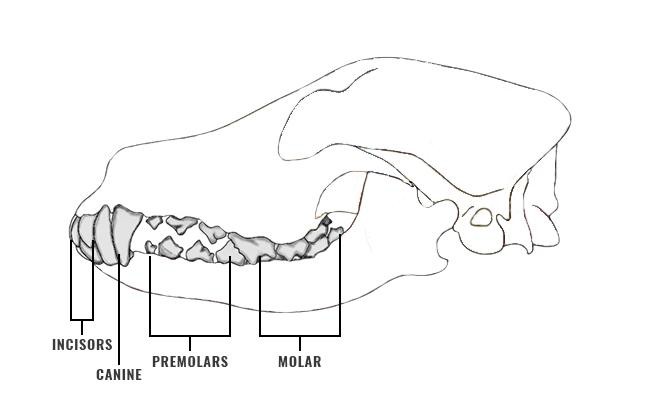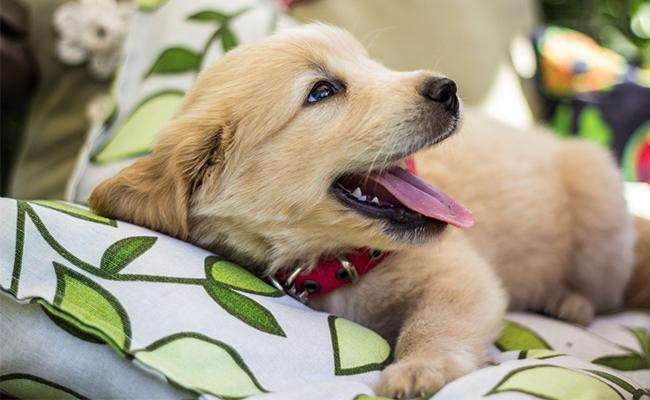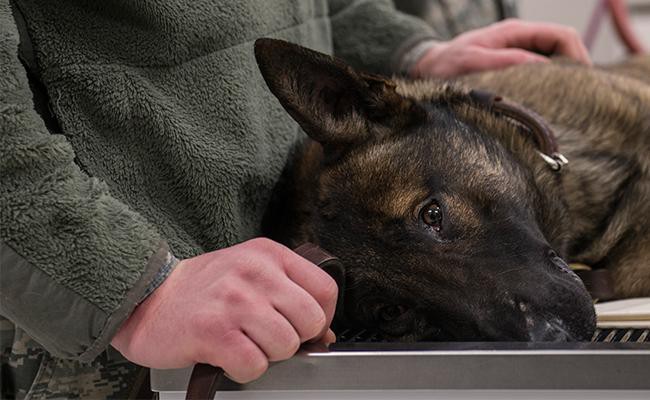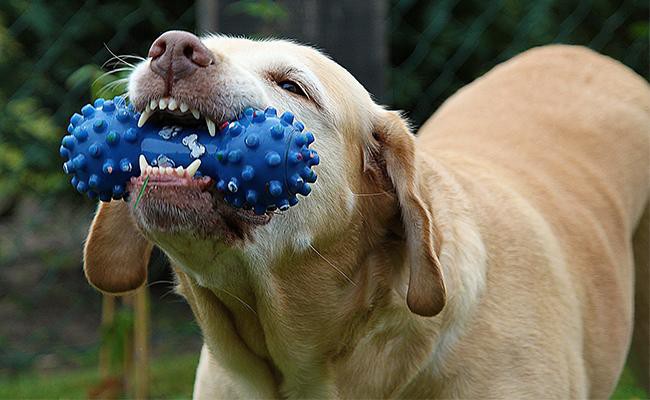Dog Pregnancy Calculator And Timeline
Dogs use their teeth for various activities. They use it for tearing, grinding, ripping, and gripping. In short, dogs’ teeth play a pivotal role when digestion is involved.
As a dog owner, one must have a major concern about his dog’s dental care. Have you ever wondered about how many teeth do dogs have?
Adult dogs have 42 teeth while we, adult humans have 32 teeth. Little kids have 20 deciduous or milk teeth while puppies have 28 milk teeth.
Healthy teeth check a dog’s healthy mouth. If you care for your dog’s teeth, you are sure to get lots of smooches and licks.
Dog Teeth Diagram
You may have watched your canine’s teeth when they were eating or growling at a mysterious object.
So, how many teeth do dogs have?
An adult dog has 42 teeth. Their teeth are as important as ours. Young pups suck on their glands for milk. This includes 12 incisors, 4 canines, 16 premolars, and 10 molars.
Matured canines use their teeth for attacking preys. They have different practical uses.
It’s necessary for us pet lovers to understand the different basics of correct oral hygiene, oral development, and dog teeth.
Puppy teeth are called deciduous. They are temporary and remain for the first 180 days of puppyhood. Adult dog’s teeth are permanent.
They will be formed by 7 months.
Dog Tooth Chart
| Dog Tooth | Deciduous (Puppy) | Adult (Permanent) |
|---|---|---|
| Incisors | Between 3 and 6 weeks | Between 3 and 5 months |
| Canine | Between 5 and 6 weeks | Between 4 and 6 months |
| Premolars | After 6 weeks | Between 4 and 5 months |
| Molars | Between 5 and 7 months |
Mature dog teeth look permanent. The proper maintenance of oral hygiene plays a crucial role in preventing disease and decay.
Dogs use their teeth for eating and it needs good proper care for health reasons.
Dog Teeth Anatomy
A canine consist of specialized and distinct types of teeth. Their teeth are designed to meet a particular purpose.
Being a carnivore, a canine’s dental structure is created to meet such a need.
Adult dogs have 4 different types of teeth –
- Canines
- Incisors
- Molars
- Premolars
1. Canines
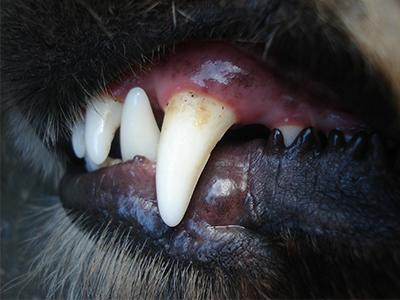
These teeth are sharp, piercing, pointed, and long. They use it when stacking food or objects in their mouth.
These teeth provide a solid grip. They can puncture objects.
Dogs have 4 canines. Mandibular and maxillary.
2. Molars
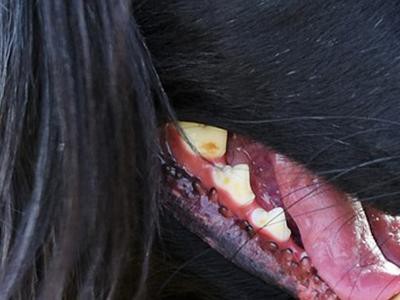
The molars are actually hidden deep and appear flat. Molars are situated behind the premolars. Molars are used for the breaking and grinding down of bones, kibble, and not something artificial.
A mother dog uses her molars to break the end of the umbilical cord to reduce post-natal issues. A dog has 10 molars. They are distributed with precision. Six molars at the bottom and four molars at the top.
3. Premolars
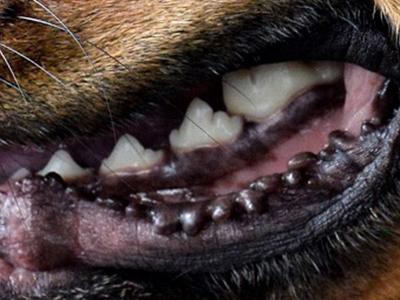
The premolars are provided for the chewing purpose. These premolars are at the side, behind the canines. While using premolars, dogs tilt their head when chewing or eating.
Premolars are your pet dog’s largest tooth. Carnassial tooth represents the 4th premolar.
They have 16 premolars. 8 at the top and the remaining 8 at the bottom.
4. Incisors
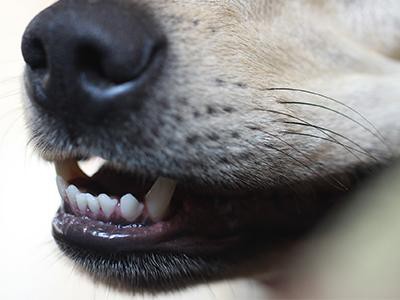
The incisors are one of the smallest you normally see at the front. They do not appear scary.
They are effective in carrying of objects or nibbling. Dogs has 12 incisors. 6 incisors at the bottom and 6 at the top.
Puppy Teeth – Basics
Puppy teeth are present more in puppyhood. They are present until your dog becomes an adult dog.
1. When do they actually grow?
Your puppy when born is toothless, blind, and deaf. They only have touch and taste. When they are 3 weeks old, their first set of puppy teeth begin to erupt.
2. How many teeth do puppies have?
The first 28 teeth should be there once your puppy reaches two months of age.
3. When do puppies get adult teeth?
Your puppy should lose all his puppy teeth when they are around three months of age.
Before they are four months old, they would have lost almost all their teeth. Adult canines are seen during this time.
4. How Can I Manage a Growing Puppy?
Puppy teething and baby teething have a lot of similarities. This means that this process of teething can be hard for a puppy. It may cause unwanted gnawing and chewing of a ton of objects.
It’s a normal phenomenon which means a process where your puppy’s teeth fall out and make way for the permanent ones.
They may drool excessively. It is understanding. They don’t cause any harm.
If you see the puppies chewing or nipping on unsuitable items, then redirect their attention onto something else.
There is teething gel-like material available and can remove any discomfort related to teething.
Puppy Teeth Vs Dog Teeth
There are some main differences in adult and puppy teeth.
Puppies do not have canines and molars. This is not needed at this stage because they do not need molars to breakdown anything large.
They have an important role. When the teeth get too sharp, the pup’s mother will find it hard to put up with different sharp pinches and nips.
The pups should look for alternative sources of food. This is another important weaning milestone.
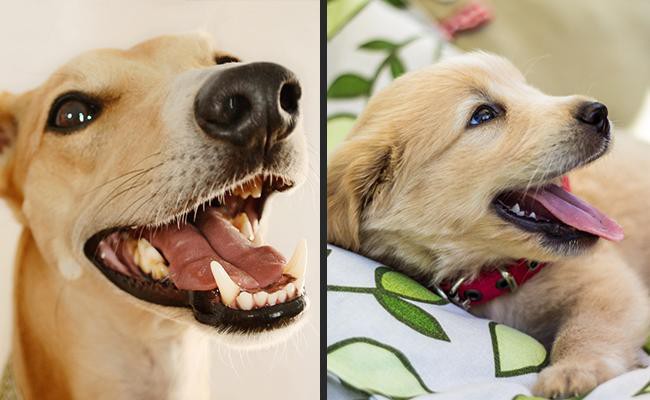
Puppies use their teeth and jaw to understand and learn their bite pressure. This is called bite inhibition. This happens due to play fighting or nipping at their mom.
Adult’s molars and canines are more suited for a big dog’s diet. They have molars. They are used to grind or chew or kill their prey.
Dog Dental Care
How to brush a dog’s teeth?
Brushing a canine’s tooth may actually sound like a weird idea. It’s one of the best ways to improve dog oral hygiene.
Daily brushing keeps the bad breath away. Some of the simple tips include –
- Do not coerce your puppy. Just sit, pat them, and then slowly approach them.
- Try positive Use a positive outcome.
- Begin brushing once or twice a week. Increase the frequency to twice or thrice a week.
The Importance Of Food And Chew Toys
Chew toys are a great way to reduce tartar and plaque build up. They are good at relieving pain. Splurge and bring home a toy for your dog.
Broccoli and carrots are a better replacement too. Dry kibbled diets can help reduce tartar and plaque.
Canine Periodontitis
It is an infection which affects your canine’s mouth. This starts from a plaque build-up.
This plaque mixes with saliva.
When plaque and tartar spread under the gum it can cause periodontal disease. Periodontal disease can result in bone and tooth loss. The most common oral disease. It is preventable with proper hygiene maintenance and care.
It’s your responsibility to maintain your pet’s pearly whites in good condition.
Canine Periodontal Signs
Early detection prevents all sorts of deterioration. The key is identifying any disease at the earliest.
Call your local expert or vet.
Common signs include
- Loss of appetite
- Tooth loss
- Bad breath – Halitosis
- Excessive drooling
- Receding Gums
- Gingivitis – Swelling, and redness of the gums
Gum diseases are treatable.
The Bottomline
It’s up to you to keep your canine’s oral health under check. Buy those special treats.
What’s your best dental chew toy?

